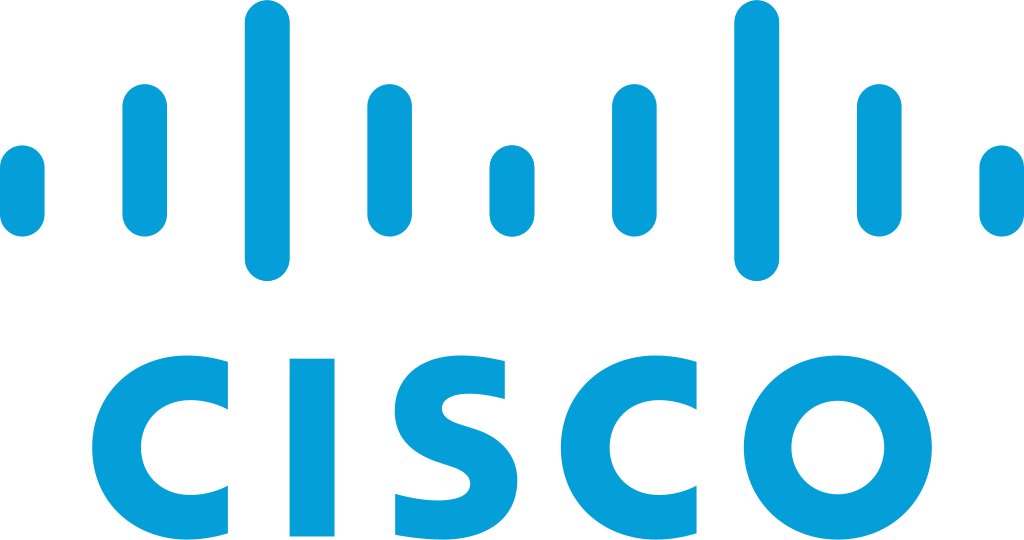Massimo Carboni
Comitato di programma
8 novembre 2023 - SESSIONE 1 | Evoluzione della rete
GARR: Come evolvere per affrontare le prossime sfide
GARR: how to evolve to face the new challenges ahead
9 novembre 2023 - SESSIONE 4 | Infrastrutture e servizi: tecnologie cloud
Verso una cloud con le organizzazioni al centro
Towards a cloud infrastracture with organisations at its core

 Massimo Carboni è vicedirettore e Chief Technical Officer del GARR. Si è laureato in Fisica all'Università degli Studi di Roma La Sapienza e da oltre 20 anni si occupa di calcolo e reti. Nell'ambito del calcolo scientifico, dagli anni 90 si è occupato della transizione dai sistemi di calcolo proprietari a quelli aperti (Unix). Durante questo periodo ha partecipato allo sviluppo di simulazioni software di tipo Montecarlo per la fisica nucleare e subnucleare (HEMAS, FLUKA). Dalla fine degli anni 90 svolge la propria attività nell'ambito del networking acquisendo una notevole esperienza nel campo delle reti ottiche, delle reti a pacchetto e su tematiche infrastrutturali collegate alle reti trasmissive. È stato responsabile della progettazione della rete GARR-G (2002) e successivamente di GARR-X (2009). È stato il coordinatore tecnico del progetto GARR-X Progress (2013-16). Nell'ambito dell'evoluzione di rete europea GEANT ha fatto parte del team di esperti che ha disegnato, progettato l'attuale rete paneuropea Géant. Oggi coordina il progetto GARR-T (Terabit), la nuova infrastruttura di rete nazionale per l’università e la ricerca.
Massimo Carboni è vicedirettore e Chief Technical Officer del GARR. Si è laureato in Fisica all'Università degli Studi di Roma La Sapienza e da oltre 20 anni si occupa di calcolo e reti. Nell'ambito del calcolo scientifico, dagli anni 90 si è occupato della transizione dai sistemi di calcolo proprietari a quelli aperti (Unix). Durante questo periodo ha partecipato allo sviluppo di simulazioni software di tipo Montecarlo per la fisica nucleare e subnucleare (HEMAS, FLUKA). Dalla fine degli anni 90 svolge la propria attività nell'ambito del networking acquisendo una notevole esperienza nel campo delle reti ottiche, delle reti a pacchetto e su tematiche infrastrutturali collegate alle reti trasmissive. È stato responsabile della progettazione della rete GARR-G (2002) e successivamente di GARR-X (2009). È stato il coordinatore tecnico del progetto GARR-X Progress (2013-16). Nell'ambito dell'evoluzione di rete europea GEANT ha fatto parte del team di esperti che ha disegnato, progettato l'attuale rete paneuropea Géant. Oggi coordina il progetto GARR-T (Terabit), la nuova infrastruttura di rete nazionale per l’università e la ricerca.
 Massimo Carboni is GARR deputy director and Chief Technical Officer. He graduated in Physics from the University of Rome La Sapienza and has been working in computing and networking for over 20 years. In the field of scientific computing, since the 1990s he has been involved in the transition from proprietary to open (Unix) computing systems. During this period he participated in the development of Montecarlo-type software simulations for nuclear and subnuclear physics (HEMAS, FLUKA). Since the end of the 90's he has been working in the networking field gaining considerable experience in the field of optical networks, packet networks and about infrastructure issues related to transmission networks. He was responsible for the design of the GARR-G network (2002) and subsequently of GARR-X (2009). He was the technical coordinator of the GARR-X Progress project (2013-16). As part of the evolution of the European network GEANT he was part of the team of experts who designed, engineered the current pan-European network Géant. He is currently coordinator of the GARR-T project, the new infrastructure of the Italian national research and education network.
Massimo Carboni is GARR deputy director and Chief Technical Officer. He graduated in Physics from the University of Rome La Sapienza and has been working in computing and networking for over 20 years. In the field of scientific computing, since the 1990s he has been involved in the transition from proprietary to open (Unix) computing systems. During this period he participated in the development of Montecarlo-type software simulations for nuclear and subnuclear physics (HEMAS, FLUKA). Since the end of the 90's he has been working in the networking field gaining considerable experience in the field of optical networks, packet networks and about infrastructure issues related to transmission networks. He was responsible for the design of the GARR-G network (2002) and subsequently of GARR-X (2009). He was the technical coordinator of the GARR-X Progress project (2013-16). As part of the evolution of the European network GEANT he was part of the team of experts who designed, engineered the current pan-European network Géant. He is currently coordinator of the GARR-T project, the new infrastructure of the Italian national research and education network.
ABSTRACT
 È iniziata l'era GARR-T, un'infrastruttura più grande, veloce, capillare e complessa che presto, grazie ai fondi PNRR, verrà ulteriormente potenziata.
In GARR-T sono gli enti della comunità i veri protagonisti del cambiamento, con un ruolo di primo piano in temi strategici come la sicurezza della rete e la modalità di accesso da parte degli utilizzatori.
La complessità della nuova rete richiede una maggiore automazione, per questo un approccio cloud-native ne renderà più snella e resiliente la gestione.
Nel corso della presentazione, esamineremo le novità della nuova rete e guarderemo oltre i dati, per capire come continuare a far evolvere l'infrastruttura GARR per rispondere alle esigenze della comunità della ricerca anticipando le sfide future.
È iniziata l'era GARR-T, un'infrastruttura più grande, veloce, capillare e complessa che presto, grazie ai fondi PNRR, verrà ulteriormente potenziata.
In GARR-T sono gli enti della comunità i veri protagonisti del cambiamento, con un ruolo di primo piano in temi strategici come la sicurezza della rete e la modalità di accesso da parte degli utilizzatori.
La complessità della nuova rete richiede una maggiore automazione, per questo un approccio cloud-native ne renderà più snella e resiliente la gestione.
Nel corso della presentazione, esamineremo le novità della nuova rete e guarderemo oltre i dati, per capire come continuare a far evolvere l'infrastruttura GARR per rispondere alle esigenze della comunità della ricerca anticipando le sfide future.
 The GARR-T era has begun, a faster, more widespread and more complex infrastructure which will soon be further potentiated, thanks to NRRP funds.
In GARR-T, the connected organisations are the true protagonists of change, with a leading role in strategic issues such as network security and user access.
The complexity of the new network requires more automation, which is why a cloud-native approach will make its management more streamlined and resilient.
During the presentation, we will review what's new in the new network and look beyond the data to understand how we can continue to evolve the GARR infrastructure to meet the requirements of the research community while anticipating future challenges.
The GARR-T era has begun, a faster, more widespread and more complex infrastructure which will soon be further potentiated, thanks to NRRP funds.
In GARR-T, the connected organisations are the true protagonists of change, with a leading role in strategic issues such as network security and user access.
The complexity of the new network requires more automation, which is why a cloud-native approach will make its management more streamlined and resilient.
During the presentation, we will review what's new in the new network and look beyond the data to understand how we can continue to evolve the GARR infrastructure to meet the requirements of the research community while anticipating future challenges.
 L'evoluzione delle tecnologie cloud, le stringenti esigenze in ambito di sicurezza e accountability così come la necessità di rafforzare sempre più resilienza e business continuity impongono una revisione della struttura della cloud GARR. L'obiettivo è arrivare ad un'infrastruttura snella e fortemente automatizzata con un approccio federato, in cui gli enti soci di GARR sono i primi beneficiari delle risorse messe a disposizione. In questa presentazione vedremo come evolverà l'accesso alla cloud GARR, il numero e la tipologia delle regioni, i sistemi di monitoraggio e reportistica e le attività di sviluppo in modalità green Field.
L'evoluzione delle tecnologie cloud, le stringenti esigenze in ambito di sicurezza e accountability così come la necessità di rafforzare sempre più resilienza e business continuity impongono una revisione della struttura della cloud GARR. L'obiettivo è arrivare ad un'infrastruttura snella e fortemente automatizzata con un approccio federato, in cui gli enti soci di GARR sono i primi beneficiari delle risorse messe a disposizione. In questa presentazione vedremo come evolverà l'accesso alla cloud GARR, il numero e la tipologia delle regioni, i sistemi di monitoraggio e reportistica e le attività di sviluppo in modalità green Field.
 The evolution of cloud technologies, the uncompromising requirements in the field of security and accountability as well as the need to guarantee resilience and business continuity require a review of the GARR cloud structure. The objective is to arrive at a streamlined and highly automated infrastructure with a federated approach, in which GARR member institutions are the first beneficiaries of the resources available. In this presentation, we will see how the GARR cloud will evolve, the number and type of regions, the monitoring and reporting systems and the development activities in green field mode..
The evolution of cloud technologies, the uncompromising requirements in the field of security and accountability as well as the need to guarantee resilience and business continuity require a review of the GARR cloud structure. The objective is to arrive at a streamlined and highly automated infrastructure with a federated approach, in which GARR member institutions are the first beneficiaries of the resources available. In this presentation, we will see how the GARR cloud will evolve, the number and type of regions, the monitoring and reporting systems and the development activities in green field mode..








